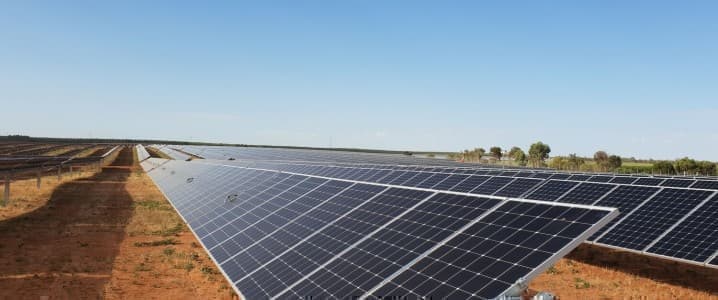The pandemic has multiplied the calls for ‘building back greener’ energy systems as economies recover from COVID-19. From the UK to China, governments around the world are racing to announce net-zero emission targets within three to four decades, and they are unveiling green stimulus packages to help economies to decarbonize and the world to stave off an unsustainable rise in global temperatures.
The fight against climate change and the need to curb were already prominent features of government plans even before the coronavirus. The pandemic accelerated the momentum as governments pledged all kinds of “Green Deals” and green stimulus packages for economic recovery.
All the major oil companies in Europe also announced net-zero emissions targets by 2050 or sooner, committing more investments in renewable energy and other low-carbon energy solutions, including carbon capture and storage (CCS) and hydrogen.
Energy Transition To Cost At Least US$40 Trillion
Yet, all the pledges from government and corporations are just tiny fractions of the true cost of the energy transition.
If the world is to come anywhere close to limiting global warming to 2 degrees Celsius or below, it will need, collectively, a bare minimum of US$30 trillion to US$40 trillion of investment in energy systems and decarbonization of industries where emissions are notoriously hard to abate such as steel and cement making. That’s Wood Mackenzie’s bare-minimum estimate of investments needed to support the energy transition and the net-zero emission aspirations of a growing number of countries. Related: OPEC+ Finally Reaches Deal On 2021 Oil Output Cuts
Raising a huge amount of investment is not the only— and possibly not the single-largest—hurdle to reining in global warming to 2 degrees Celsius.
The “Green Deals” themselves need to attract trillions of U.S. dollars in private capital. This cannot happen without additional collaboration between public and private sectors and various targeted support policies. Timing is also of importance. The world cannot afford to wait another decade, or even another year, to begin pouring investments en masse in developing new low-carbon technologies and cutting the cost of expensive existing technology if it wants to meet the goals of the Paris Agreement.
Who Will Pay For It?
The first to move will be the governments, via green stimulus packages and climate policies of support for clean energy technologies.
Of course, this in itself will not be enough. Governments, therefore, are hoping that their packages and policies will incentivize private investment into sectors crucial for reducing emissions such as increased shares of renewable electricity generation, electric vehicles (EVs), carbon capture and storage, and green hydrogen.
Around one-third of global economic recovery packages over the next year and a half is earmarked for green economic recovery, according to estimates by Prakash Sharma and Jonny Sultoon of WoodMac’s Energy Transition team and Peter Martin, WoodMac’s Head of Economics. Governments have pledged to pour around US$4 trillion into “building back greener”, one-third of the collective US$12-trillion global recovery packages over the next 18 months. The US$4-trillion green incentives are expected to attract private capital two to three times higher, WoodMac says.
So the world could have as much as between US$12 trillion and US$16 trillion in investment in the energy transition within two years. But it will need more—much more investment and much more collaboration to not lose the momentum.
Governments need to promote all types of low-carbon technologies and hope for private capital to fund or co-fund development of those technologies to see if their costs could be brought down to levels that could make mass deployment economically feasible. Related: The Oilfield Service Industry Will Never Truly Recover
Where Will Private Capital Come From?
“While public finance has an important role to play, via development and green banks, more than 70% of clean energy-related investment in the SDS [Sustainable Development Scenario] is likely to come from private sources of capital, incentivised by appropriate market design, regulatory frameworks and policy incentives. In developing economies, in particular, improving the bankability of projects and the ability of companies to raise funds will have an important part to play in managing the affordability of clean energy transitions,” the International Energy Agency (IEA) said in its latest energy investment estimate in October.
Part of the private investment is set to come from the biggest European oil and gas companies, all of which have pledged more funds to low-carbon energy and technologies.
Europe’s Big Oil is likely to be in early in the energy transition investment, “to learn and gain first-mover advantage,” Wood Mackenzie’s analysts said.
In the early stages of new low-carbon technologies, risks are higher, but rewards could be even higher if companies gain that first-mover advantage over competitors.
Venture capital and private equity are also set to be among the early investors in green technologies, according to WoodMac.
Still, the world will need more than the bare-minimum investment if it wants to reduce emissions not only from electricity generation, but also from sectors such as steel or cement making, which will require brand-new breakthrough technologies.
“Heavy industries have limited near-zero emissions technology options that are commercially available and scalable today,” IEA analysts said in July.
Government stimulus packages and incentives for green technologies, combined with company targets for becoming net-zero businesses, will not come even close to beginning to fund the energy transition. It will need much more capital and many private investors to believe in the rewards of the energy transition, including in the financial returns in the long term.
By Tsvetana Paraskova for Oilprice.com
More Top Reads From Oilprice.com:
- A Major Oil Rally Could Be On The Horizon
- Oil Majors Are Paying The Price For Investing In Renewables
- Japan And Kuwait Strike Major Oil Storage Deal


















